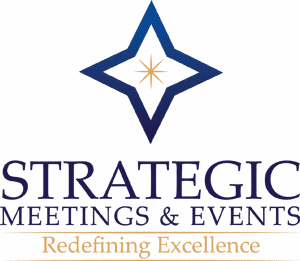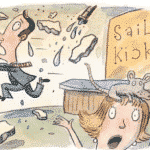Travel Managers Get Meetings Low-Down
Implementing a meetings management program
By Donna M. Airoldi
Alexandria, Va. — The Groups and Meetings Committee of the National Business Travel Association last month released a white paper outlining recommendations for travel managers responsible for meetings management program within their companies.
Titled “Framework for Success: Building a Strategic Meetings Management Program,” the document offers a broad spectrum of tools designed to provide common terminology, cost-benefit analyses and best-practice methodologies in meetings management.
Basically, it’s to help travel managers and companies get a handle on and centralize certain aspects of the meeting planning process, particularly the expense side.
With an increasing number of companies consolidating their corporate travel and meetings departments in recent years, at least through procurement practices, and the newly enacted Sarbanes-Oxley Act likely to further accelerate this trend (see accompanying article), NBTA’s timing is on target.
“The membership of NBTA asked for this white paper because more and more travel managers are being asked to take over meetings departments,” said Madlyn Caliri, co-chairperson of the committee and supplier manager for AT&T’s global travel and meetings program in Bridgewater, N.J. “The feedback so far has been tremendous and very favorable.”
Overall, the key recommendations are to look at a company’s current situation and need; compare it to the recommended best practices to identify any gaps that exist; then create a company-wide development plan to attack and reduce those gaps, said Caliri’s co-chair, Tracey Wilt, supplier manager of travel, meetings and incentives for Xerox Corp. in Webster, N.Y.
Typical motivations behind meetings management programs are to save money, attain greater leverage with suppliers, and minimize risk to the company. But because corporations vary widely, there is no single right way to go about developing these programs. Therefore, the committee aimed to provide an easily adaptable guideline that would be flexible enough to suit any company culture or size, Wilt said.
Discovery
The first step is to perform a situation analysis to determine a company’s current position and need in terms of spend, processes, policies and personnel involved in the planning of meetings and events.
 Three key activities are to conduct internal interviews of both professional planners and non-traditional planners, such as administrative assistants, to determine the how, when and why of a company’s meeting activity; historical data analysis, covering accounts payable, contracts, purchasing tools and vendor expenditures; and supplier research, which can be used to validate, supplement and enhance the baseline.
Three key activities are to conduct internal interviews of both professional planners and non-traditional planners, such as administrative assistants, to determine the how, when and why of a company’s meeting activity; historical data analysis, covering accounts payable, contracts, purchasing tools and vendor expenditures; and supplier research, which can be used to validate, supplement and enhance the baseline.
“Gathering the data to understand where to start is the biggest challenge,” Caliri said. “There are many potential sources of data, and one has to make sure to get the right data, all the data, and that an integrity factor has been built in.”
This process can identify planning loopholes, expenditure levels and other metrics to use in validating and benchmarking total company-wide participation in meetings and events (also known as ROI), as well as measure the gaps between the initial estimate of meeting-related spend and the actual volume.
Opportunities
Once the discovery stage is completed, the document suggests identifying the places where opportunity for savings exists.
One such area is process efficiencies. Look for overlapping activities and special opportunities poll Powered by PollMonkey Has the looming economic downturn affected your program planning? Meetings have been cancelled due to uncertainty Meetings have been postponed due to uncertainty We have reduced attendee counts Budgets have been reduced overall No – there has been no change Other Submit Successful Meetings Events Hosted buyer programs that offer career-enriching accredited education with industry experts and prescheduled one-on-one appointments with destination suppliers industry events calendar featured event see all events duplication of effort where implementing a company-wide policy to take advantage of company-wide resources and tools will streamline planners’ workload, helping travel managers center on the mechanics of meeting planning.
Risk management is another area. The white paper concludes that it is highly likely during the discovery phase to find several contractual agreements that the company has entered for meetings and events. Some will have been signed by those with little or no legal wherewithal; others bring added exposure and security risk to the company. Centralizing the drawing-up and approval of these contracts not only will mitigate those risks, it also will raise the awareness of the level of meetings activity.
Tied to efficiencies and risk management, the committee’s findings say savings can be had by applying basic procurement principles to the purchase of goods and services for meetings and events. Preferred supplier relationships with leveraged negotiating (better pricing) and contracting (better terms) is a direct and measurable result.
Best Practices
The white paper outlines six areas of suggested change:
Approval: Require that approval to request and plan a meeting is gained at a level higher than both the person making the request and the planner. This should decrease the occurrence of meeting cancellations.
Meeting Registration: Define meetings and events in terms of a company’s strategic objectives, design a budget template, then for each meeting and event, assign it a number and track it through each stage of the planning process.
Sourcing: The best scenario would be to have this handled by one central group or an individual who is responsible for leveraging the corporation’s meeting-related spend. Three key areas for sourcing are supplier identification and selection (move toward a company-wide model of preferred suppliers); negotiations (engage more than one supplier at the same time); and contracting and risk management (develop templates and have the legal department or a designated individual be the only ones to sign contracts).
Acquisitions/Payment Planning: Redesign the general ledger or budget codes and limit the methods of payment for meeting-related expenses, thereby boosting the overall ability to scrutinize expenditures.
 Data Analysis/Reporting: Measure the return on investment for a completed meeting by taking the actual data and comparing it to the planned outcome.
Data Analysis/Reporting: Measure the return on investment for a completed meeting by taking the actual data and comparing it to the planned outcome.
Technology: Use what’s available in the marketplace to automate processes, eliminate paperwork and deliver efficiencies, such as with meeting registration, RFPs, attendee registration and so forth.
Implementation could take anywhere from six months to two years, said the co-chairs.
In response to a question about possible frustration and delays due to the expanded levels of approval, Caliri replied, “As with any new program, there are going to be some delays, but over time, the new steps become standard operating procedures, and planners adjust to the new lead-time needs.”
Perceptions
The committee avoids the term “meetings consolidation” in favor of “strategic meetings management program” because of the fear of fewer meetings and jobs that the former label invokes in the industry, especially when the term “commodity” comes into play, as it often does during discussions of consolidation.
“I don’t see why commodity is such a dirty word, especially in hospitality, where service is a strong component of what one’s buying,” said Kari Kesler, a co-leader on the committee’s subteam and strategic sourcing specialist for travel and meetings for ING Financial Services in Minneapolis.
“Why are people worried about the word if they’re smart enough to realize that it’s about price and value? Instead of worrying about word choice, their time and effort should be spent on learning how to buy and sell in this new area.”
Indeed, meetings consolidation can just as easily lead to professional enrichment as it can to lost jobs and fewer meetings.
Christy Lamagna, who three months ago became vice president of events and operations at Cendant Corp., previously worked as an independent meeting consultant. For one client, a communications company, she was asked to merge the travel managers and meetings departments.
“My job changed in that I got to have more of an impact on things and make a difference,” she said. “Having a good meeting is one thing. Saving the company $1 million in six months — that was meaningful.”
Future Products
NBTA’s Groups & Meetings Committee, created in July 2003, is composed of 16 members from various supplier sectors who have direct experience in managing groups or meetings from a procurement or operational perspective.
It plans to release additional documents and strategies for successfully implementing a meetings management program later this year to support this white paper. Topics will cover technology options, meeting planners as internal customers, hotel and airline FAQs, and the impact of governmental legislation on travel managers.
Tags: Travel Managers Get Meetings Low-Down, Travel Managers, Event Planning, Event Planners, Strategic Planners, Strategic Events, Corporate Meetings, Corporate Events, Corporate Travel, Successful Meetings





